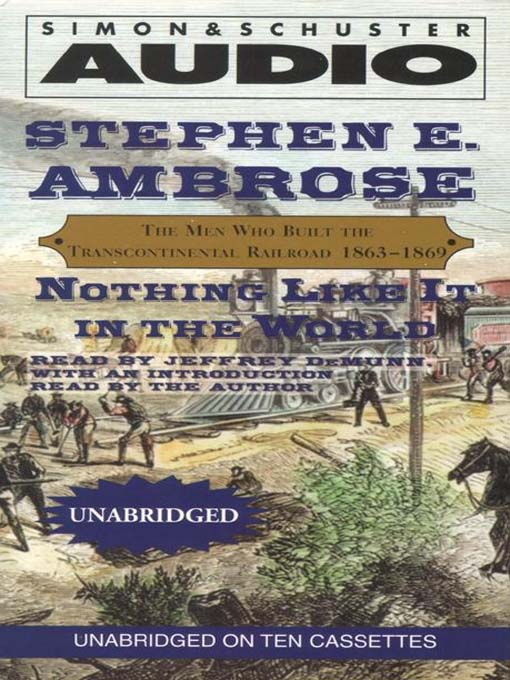
Nothing Like It In the World
The Men Who Built The Transcontinental Railroad 1863--1869
کتاب های مرتبط
- اطلاعات
- نقد و بررسی
- دیدگاه کاربران
نقد و بررسی

The locomotive was the first great triumph over time and space. After it came, and after it crossed the continent of North America, nothing could ever again be the same. Ambrose honors the men who brought the nation together East and West. Chinese and Irish, veterans of the Confederate and Union armies, they spanned the prairies, pierced the Rocky Mountains with black powder and by hand. This audio edition includes a stirring introduction by the author himself. DeMunn's full-text reading is clear and well modulated. The book is chocked with piquant detail. Did you know, for instance, that Abraham Lincoln had imagined the Transcontinental Railroad before he ever saw a train? B.H.C. (c) AudioFile 2000, Portland, Maine

August 28, 2000
Eminent historian Ambrose notes that he once viewed the investors and businessmen who built the transcontinental railroad as robber barons who bilked the government and the public. But in his rough-and-tumble, triumphant saga--sure to appeal to the many readers of Ambrose's bestseller Undaunted Courage--he presents the continent-straddling railroad, yoking east and west at Promontory Point, Utah, in 1869, as a great democratic experiment, a triumph of capitalist organization, free labor, brains and determination that ushered in the American Century, galvanized trade and settlement, and made possible a national culture. To critics who charge that the railroad magnates were corrupt and grew obscenely rich and powerful through land grants and government bonds, Ambrose replies that the land grants never brought in enough money to pay the bills and, further, that the bonds were loans, fully paid back with huge interest payments. But this argument fails to convince, partly because Ambrose does a superlative job of re-creating the grim conditions in which the tracks were laid. The Central Pacific's workers were primarily Chinese, earning a dollar a day. Union Pacific workers were mostly Irish-American, young, unmarried ex-soldiers from both the Union and the Confederacy. Accidental deaths were commonplace, and the two companies, notwithstanding strikes, slowdowns and drunken vice, engaged in a frantic race, mandated by Congress, as the winner got the greater share of land and bonds. As a result of the haste, an enormous amount of shoddy construction had to be replaced. Native Americans, who wanted the iron rail out of their country, hopelessly waged guerrilla warfare against railroad builders who talked openly of exterminating them. Drawing on diaries, memoirs, letters, telegrams, newspaper accounts and other primary sources, Ambrose celebrates the railroad's unsung heroes--the men who actually did the backbreaking work. 32 pages of b&w photos. 6-city author tour.

























دیدگاه کاربران